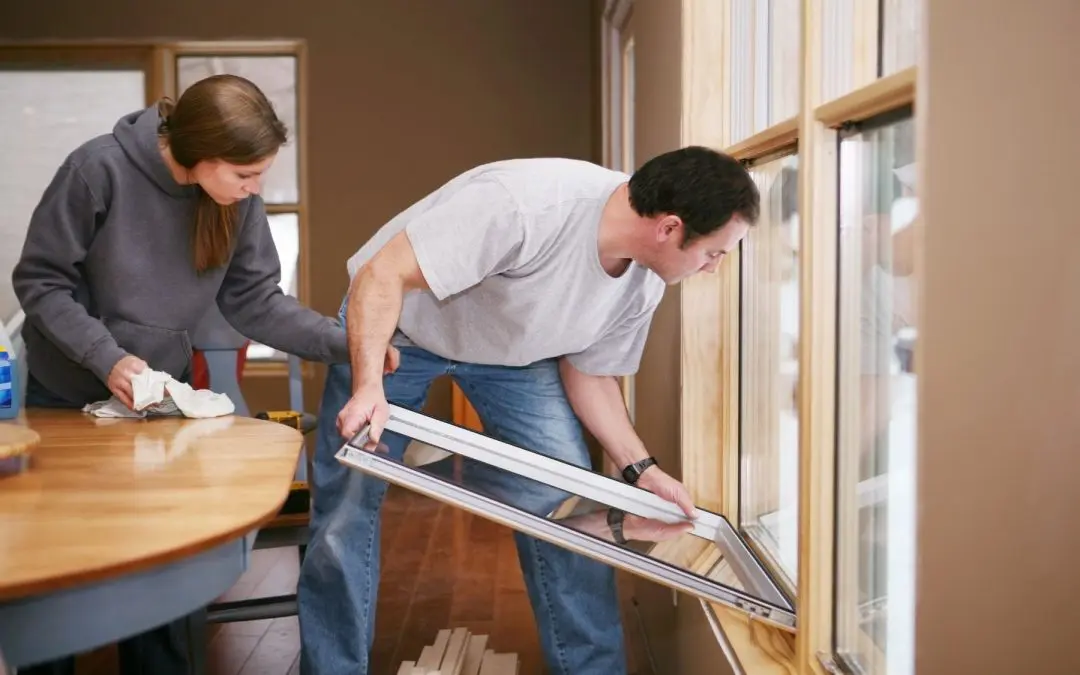If you are a homeowner considering an upgrade, you’ve likely heard the term “energy-efficient windows.” This is a significant upgrade that directly impacts your home’s comfort, value, and utility bills. Windows are often one of the biggest weak points in a home’s thermal envelope, accounting for a substantial percentage of heating and cooling energy loss. Upgrading to modern, high-performance windows is one of the most effective steps you can take to make your home more comfortable and significantly reduce your energy consumption.
What Makes a Window “Energy-Efficient”?
An energy-efficient window is designed to minimize heat transfer, air leakage, and solar heat gain, effectively keeping your conditioned air inside and the outside temperatures where they belong. Traditional single-pane windows are notorious for allowing heat to easily pass through, but modern technology introduces multiple features that create a formidable thermal barrier.
The Role of Glass and Glazing
The glass, or glazing, is the core of the window’s performance. The first major step toward efficiency is the shift from single-pane to double- or triple-pane glass. This construction involves two or three sheets of glass separated by an air space.
Insulating Gas Fills
That space between the panes is not just empty air; it is often filled with an inert, non-toxic gas like argon or krypton. These gases are much denser than regular air and have lower thermal conductivity, meaning they slow the transfer of heat far more effectively. Argon is the most common and cost-effective fill, while Krypton offers superior performance in thinner spaces, often found in triple-pane units.
Low-E Coatings
Perhaps the most important advancement is the development of Low-Emissivity (Low-E) coatings. This is a microscopically thin, virtually invisible metallic layer applied to one or more of the glass surfaces. It works by reflecting radiant heat. In the winter, the coating reflects indoor heat back into the house, keeping it warm. In the summer, it reflects the sun’s infrared heat away from the house, keeping the interior cool. This reflection helps regulate your indoor temperature year-round and also blocks harmful ultraviolet (UV) rays, protecting your furniture, carpets, and artwork from fading.
Frame Materials and Spacers
The window frame and the spacer—the component separating the glass panes—also play critical roles. Frames made from materials like vinyl, fiberglass, or wood offer better insulation than traditional aluminum, which can easily conduct heat and cold. Similarly, modern “warm-edge” spacers use materials that are less conductive than the older, standard metal versions, further reducing heat loss around the edges of the glass and helping to prevent condensation.
Key Benefits of Energy-Efficient Windows
Beyond just lower utility bills, installing energy-efficient windows provides immediate and long-term advantages that improve your quality of life at home.
Enhanced Indoor Comfort
Eliminating drafts and cold spots near windows means a more consistent and comfortable temperature throughout your home. You will no longer feel the need to avoid the seat near the window in winter or feel a blast of heat when walking past it in summer. Energy-efficient windows keep the interior glass surface closer to the temperature of the room, preventing those uncomfortable temperature gradients.
Increased Home Value
New, high-performance windows are a highly desirable feature for prospective buyers. They signal a well-maintained home and translate into tangible long-term savings. Studies often show that homeowners can recoup a significant portion of their investment when they sell their home. Furthermore, in many regions, you may qualify for federal tax credits or local utility rebates, which help offset the initial cost.
Reduced Noise Pollution
The multiple layers of glass and insulating gas fill in double- and triple-pane windows act as an effective sound barrier. If you live near a busy street, an airport, or an otherwise noisy area, this reduction in external noise can transform your home into a quieter, more peaceful sanctuary.
Energy-Efficient Windows: Frequently Asked Questions
Do I need different windows for different climates?
Yes. The ideal energy-efficient window depends on your region’s climate. In a cold climate, you will want a window with a very low U-factor to minimize heat loss. In a hot climate, a low Solar Heat Gain Coefficient (SHGC) is more important to block solar heat. Check the ENERGY STAR website for the specific requirements in your climate zone.
How long does it take for energy-efficient windows to pay for themselves?
The payback period varies widely based on your climate, the cost of energy in your area, and the original condition of your old windows. However, homeowners typically see a return on investment through monthly energy savings and increased home value within a few years.
Should I choose double-pane or triple-pane windows?
Double-pane windows are the modern standard and offer a strong balance of efficiency and cost. Triple-pane windows provide superior insulation and are generally recommended for homes in extremely cold climates where heating costs are very high or in very noisy locations where maximum sound dampening is desired.
Home Support Property Inspections offers professional inspections to first-time homeowners in Maryland and DC. Contact us to request our services.

